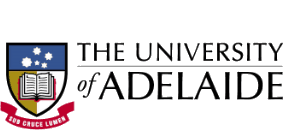Research Publications
Publications using TERN
Since its inception, TERN’s infrastructure has enabled the publication of more than 1000 peer-reviewed scientific journal articles or books.
Acknowledging TERN and NCRIS in publications
We provide TERN data, samples and site-based research infrastructure freely to the Australian and international scientific communities research services.
Therefore, users are required to clearly acknowledge their source in one the following formats:
TERN Funding Acknowledgment
This work was funded by the Terrestrial Ecosystem Research Network (TERN), an Australian Government NCRIS-enabled project.
TERN Partial Funding Acknowledgment
This work was partly funded by the Terrestrial Ecosystem Research Network (TERN), an Australian Government NCRIS-enabled project.
TERN Infrastructure Acknowledgement
This work is supported by the use of Terrestrial Ecosystem Research Network (TERN) infrastructure, which is enabled by the Australian Government’s National Collaborative Research Infrastructure Strategy (NCRIS).
Data Acknowledgement
Data was sourced from Terrestrial Ecosystem Research Network (TERN) infrastructure, which is enabled by the Australian Government’s National Collaborative Research Infrastructure Strategy (NCRIS).
If you have any questions about TERN or NCRIS acknowledgements or would like copies of logos or branding guidelines please contact us.
We also request that you send us copies of papers, books, book chapters, and conference papers etc. that have been created using any of our data as soon as possible after their acceptance. This allows us to easily track the use of our infrastructure and enables us to add your publication to our website which potentially increases the exposure of your research.
Citing TERN data in publications
Data users are requested to use the citation information provided in the collection metadata to credit relevant people and organisations involved in the data collection.
Have you used TERN data? Let us know
If you have used or are using TERN data, please let us know via the quick and easy self-reporting form below.






